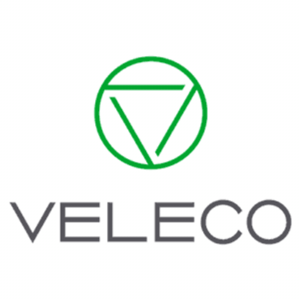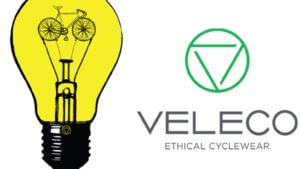Content-Based Image Retrieval Using Error Diffusion Block Truncation Coding Features
This paper presents a new approach to index color images using the features extracted from the error diffusion block truncation coding (EDBTC). The EDBTC produces two color quantizers and bitmap images, which are further, processed using vector quantization (VQ) to generate the image feature descriptor. Herein two features are introduced, namely, color histogram feature (CHF) and bit pattern histogram feature (BHF), to measure the similarity between a query image and the target image in database.
The CHF and BHF are computed from the
VQ-indexed color quantizer and VQ-indexed bitmap image, respectively. The
distance computed from CHF and BHF can be utilized to measure the similarity
between two images. As documented in the experimental result, the proposed indexing
method outperforms the former block truncation coding based image indexing and
the other existing image retrieval schemes with natural and textural data sets.
Thus, the proposed EDBTC is not only examined with good capability for image
compression but also offers an effective way to index images for the content
based image retrieval system.
1.2 INTRODUCTION
Many former schemes have been developed to improve the retrieval accuracy in the content-based image retrieval (CBIR) system. One type of them is to employ image features derived from the compressed data stream as opposite to the classical approach that extracts an image descriptor from the original image; this retrieval scheme directly generates image features from the compressed stream without first performing the decoding process. This type of retrieval aims to reduce the time computation for feature extraction/generation since most of the multimedia images are already converted to compressed domain before they are recorded in any storage devices. In the image features are directly constructed from the typical block truncation coding (BTC) or halftoning-based BTC compressed data stream without performing the decoding procedure.
These image retrieval schemes involve two phases, indexing and searching, to retrieve a set of similar images from the database.
The indexing phase extracts the image
features from all of the images in the database which is later stored in
database as feature vector. In the searching phase, the retrieval system
derives the image features from an image submitted by a user (as query image),
which are later utilized for performing similarity matching on the feature
vectors stored in the database. The image retrieval system finally returns a
set of images to the user with a specific similarity criterion, such as color
similarity and texture similarity. The concept of the BTC is to look for a
simple set of representative vectors to replace the original images.
Specifically, the BTC compresses an image into a new domain by dividing the
original image into multiple nonoverlapped image blocks, and each block is then
represented with two extreme quantizers (i.e., high and low mean values) and
bitmap image. Two subimages constructed by the two quantizers and the
corresponding bitmap image are produced at the end of BTC encoding stage, which
are later transmitted into the decoder module through the transmitter. To
generate the bitmap image, the BTC scheme performs thresholding operation using
the mean value of each image block such that a pixel value greater than the
mean value is regarded as 1 (white pixel) and vice versa.
The traditional BTC method does not improve the image quality or compression ratio compared with JPEG or JPEG 2000. However, the BTC schemes achieve much lower computational complexity compared with that of these techniques. Some attempts have been addressed to improve the BTC reconstructed image quality and compression ratio, and also to reduce the time computation. Even though the BTC scheme needs low computational complexity, it often suffers from blocking effect and false contour problems, making it less satisfactory for human perception. The halftoning-based BTC, namely, error diffusion BTC (EDBTC) is proposed to overcome the two above disadvantages of the BTC. Similar to the BTC scheme, EDBTC looks for a new representation (i.e., two quantizers and bitmap image) for reducing the storage requirement. The EDBTC bitmap image is constructed by considering the quantized error which diffuses to the nearby pixels to compensate the overall brightness, and thus, this error difussion strategy effectively removes the annoying blocking effect and false contour, while maintaining the low computational complexity.
The low-pass nature of human visual system is employed in to access the reconstructed image quality, in which the continuous image and its halftone version are perceived similarly by human vision when these two images viewed from a distance. The EDBTC method divides a given image into multiple nonoverlapped image blocks and each block is processed independently to obtain two extreme quantizers. This unique feature of independent processing enables the parallelism scenario. In bitmap image generation step, the pixel values in each block are thresholded by a fixed average value in the block with employing error kernel to diffuse the quantization error to the neighboring pixels during the encoding stage. A new image retrieval system has been proposed for the color image.
Three feature descriptors, namely, structure element correlation (SEC), gradient value correlation (GVC), and gradient direction correlation (GDC) are utilized to measure the similarity between the query and the target images in database. This indexing scheme provides a promising result in big database and outperforms the former existing approaches, as reported in the method in compresses a grayscale image by combining the effectiveness of fractal encoding, discrete cosine transform (DCT), and standard deviation of an image block. An auxiliary encoding algorithm has also been proposed to improve the image quality and to reduce the blocking effect. As reported in this new encoding system achieves a good coding gain as well as the promising image quality with very efficient computation. In a new method for tamper detection and recovery is proposed utilizing the DCT coefficient, fractal coding scheme, and the matched block technique. This new scheme yields a higher tampering detection rate and achieves good restored image quality, as demonstrated in combines the fractal image compression and wavelet transform to reduce the time computation in image encoding stage.
This method produces a good image quality with a fast encoding speed, as reported in the fast and efficient image coding with the no-search fractal coding strategies have been proposed methods employ the modified graylevel transform to improve the successful matching probability between the range and domain block in the fractal coding. Two gray-level transforms on quadtree partition are used in to achieve a fast image coding and to improve the decoded image quality. The method in exploits a fitting plane method and a modified gray-level transform to speedup the encoding process. The fractal image coding presented in accelerates the image encoding stage, reduces the compression ratio, and simultaneously improves the reconstructed image quality. A fast fractal coding is also proposed in which utilizes the matching error threshold. This method first reduces the codebook capacity and takes advantage of matching error threshold to shorten the encoding runtime. The method in can achieve a similar or better decoded image with the fast compression process compared with the conventional fractal encoding system with full search strategy.
The contributions can be summarized as follows: 1) extending the EDBTC image compression technique for the color image; 2) proposing two feature descriptors, namely, color histogram feature (CHF) and bit pattern histogram feature (BHF), which can be directly derived from the EDBTC compressed data stream without performing decoding process; and 3) presenting a new low complexity joint CBIR system and color image compression by exploiting the superiority of EDBTC scheme. The rest of this paper is organized as follows. A brief introduction of EDBTC is provided in Section II. Section III presents the proposed EDBTC image retrieval including the image feature generation and accuracy computation. Extensive experimental results are reported at Section IV. Finally, the conclusion is drawn at the end of this paper.
1.3 LITRATURE SURVEY
IMAGE RETRIEVAL BASED ON TEXTURE AND COLOR METHOD IN BTC-VQ COMPRESSED DOMAIN
AUTHOR: M. R. Gahroudi and M. R. Sarshar,
PUBLISH: Proc. Int. Symp. Signal Process. Appl., Feb. 2007, pp. 1–4.
EXPLANTION:
In this article a new method for retrieval of images compressed by BTC has been provided. In our approach, we use some classified patterns, derived from BTC method as a retrieval feature. This method has been examined on a database consisting of 9983 images with different contents and its results have been compared with similar methods. Maintenance of visual and natural features of image in compression and so that efficiency of an image depends on two parameters of 1-Data rate and 2- Distortion. If the retrieved image is completely similar to the original image, it is called “Lossless technique” and otherwise it is called “Lossy technique”. One of most usable methods is the method of cutting the image to non-covering blocks. The deficiency of this method is that margins of blocks may be seen at the retrieval time. BTC-VQ method has high speed in compressing, and also in articles it has been shown that this method has suitable capability for images retrieval, because in addition to using the information of block-in connection, it also stores the important information of each block in compressed form. In this article, BTC-VQ and a new presented method is used for compressing, based on Color Histogram and Block Pattern Histogram. Simultaneous utilization of Color Histogram and BPH provides us suitable information based on color and edges, and this cause an increase in system speed and efficiency. Utilization of color histogram minimizes the limits of browsing images and will cause the block pattern histogram to find the images with higher speed. One of the defects of BTC-VQ is low degree of compressing in comparison to other compressing methods such as JPEG and VQ.
COLOUR IMAGE RETRIEVAL USING PATTERN CO-OCCURRENCE MATRICES BASED ON BTC AND VQ
AUTHOR: F.-X. Yu, H. Luo, and Z.-M. Lu,
PUBLISH: Electron. Lett., vol. 47, no. 2, pp. 100–101, Jan. 2011.
EXPLANTION:
Proposed is an effective feature
for colour image retrieval based on block truncation coding (BTC) and vector
quantisation (VQ). Each input colour image is decomposed into Y, Cb and Cr
components. BTC is performed on the 4×4 Y blocks, obtaining a mean pair
sequence and a bitplane sequence, and then they are quantised with the contrast
pattern codebook and visual pattern codebook to obtain the contrast and visual
pattern co-occurrence matrix. VQ is performed on the 4×4 Cb blocks and Cr
blocks with the Cb codebook and Cr codebook, respectively, to obtain the colour
pattern co-occurrence matrix. Retrieval simulation results show that, compared
with two existing BTC-based features, the proposed feature can greatly improve
retrieval performance.
EFFICIENT CONTENT BASED IMAGE RETRIEVAL USING MULTIPLE SUPPORT VECTOR MACHINES ENSEMBLE
AUTHOR: E. Yildizer, A. M. Balci, M. Hassan, and R. Alhajj,
PUBLISH: Expert Syst. Appl., vol. 39, no. 3, pp. 2385–2396, 2012.
EXPLANTION:
With the evolution of digital
technology, there has been a significant increase in the number of images
stored in electronic format. These range from personal collections to medical
and scientific images that are currently collected in large databases. Many
users and organizations now can acquire large numbers of images and it has been
very important to retrieve relevant multimedia resources and to effectively
locate matching images in the large databases. In this context, content-based
image retrieval systems (CBIR) have become very popular for browsing, searching
and retrieving images from a large database of digital images with minimum
human intervention. The research community is competing for more efficient and
effective methods as CBIR systems may be heavily employed in serving time
critical applications in scientific and medical domains. This paper proposes an
extremely fast CBIR system which uses Multiple Support Vector Machines
Ensemble. We have used Daubechies wavelet transformation for extracting the
feature vectors of images. The reported test results are very promising. Using
data mining techniques not only improved the efficiency of the CBIR systems,
but they also improved the accuracy of the overall process.
CHAPTER 2
2.0 SYSTEM ANALYSIS
2.1 EXISTING SYSTEM:
Existing method for retrieval of images compressed by BTC has been provided in some classified patterns, derived from BTC method as a retrieval feature. This method has been examined on a database consisting of 9983 images with different contents and its results have been compared with similar methods. Maintenance of visual and natural features of image in compression and so that efficiency of an image depends on two parameters of 1-Data rate and 2- Distortion. If the retrieved image is completely similar to the original image, it is called “Lossless technique” and otherwise it is called “Lossy technique”. One of most usable methods is the method of cutting the image to non-covering blocks. The deficiency of this method is that margins of blocks may be seen at the retrieval time.
BTC-VQ method has high speed in compressing, and also in articles it has been shown that this method has suitable capability for images retrieval, because in addition to using the information of block-in connection, it also stores the important information of each block in compressed form. In this article, BTC-VQ and a new presented method is used for compressing, based on Color Histogram and Block Pattern Histogram.
Simultaneous utilization of Color
Histogram and BPH provides us suitable information based on color and edges,
and this cause an increase in system speed and efficiency. Utilization of color
histogram minimizes the limits of browsing images and will cause the block
pattern histogram to find the images with higher speed. One of the defects of
BTC-VQ is low degree of compressing in comparison to other compressing methods
such as JPEG and VQ.
2.1.1 DISADVANTAGES:
- BTC scheme performs thresholding operation using the mean value of each image block such that a pixel value greater than the mean value is regarded as 1 (white pixel) and vice versa.
- The traditional BTC method does not improve the image quality or compression ratio compared with JPEG or JPEG 2000 lower computational complexity compared with that of these techniques.
- BTC scheme needs low computational complexity, it often suffers from blocking effect and false contour problems, making it less satisfactory for human perception.
2.2 PROPOSED SYSTEM:
We proposed in the literature triggered by the successfulness of EDBTC, such as image watermarking inverse halftoning, data hiding, image security, and halftone classification. The EDBTC scheme performs well in those areas with promising results, as reported in [3]–[10], since it provides better reconstructed image quality than that of the BTC scheme. In this paper, the concept of the EDBTC compression is catered to the CBIR domain, in which the image feature descriptor is constructed from the EDBTC compressed data stream.
In this scheme, the compressed data stream that is already stored in database is not necessary decoded to obtain the image feature descriptor. The descriptor is directly derived from EDBTC color quantizers and bitmap image in compressed domain by involving the vector quantization (VQ) for the indexing. The similarity criterion between the query and target images is simply measured using the EDBTC feature descriptor. This new CBIR system with the EDBTC feature can also be extended for video indexing and searching, in which the video is viewed and processed as a sequence of images.
The EDBTC feature descriptor can also be adopted as an additional feature for object tracking, background subtraction, image annotation, image classification, and segmentation. The EDBTC feature offers a competitive performance compared with that of the local binary pattern (LBP)-based feature, and thus the EDBTC feature can substitute the LBP-based feature for image processing and computer vision application with even faster processing efficiency. A new image retrieval system has b
The contributions can be summarized as follows:
1) extending the EDBTC image compression technique for the color image; 2) proposing two feature descriptors, namely, color histogram feature (CHF) and bit pattern histogram feature (BHF), which can be directly derived from the EDBTC compressed data stream without performing decoding process; and 3) presenting a new low complexity joint CBIR system and color image compression by exploiting the superiority of EDBTC scheme.
2.2.1 ADVANTAGES:
- This method produces a good image quality with a fast encoding speed, as reported in the fast and efficient image coding with the no-search fractal coding strategies have been proposed in both methods employ the modified graylevel transform to improve the successful matching probability between the range and domain block in the fractal coding. Two gray-level transforms on quadtree partition are used in to achieve a fast image coding and to improve the decoded image quality.
- The method in exploits a fitting plane method and a modified gray-level transform to speedup the encoding process. The fractal image coding presented in [74] accelerates the image encoding stage, reduces the compression ratio, and simultaneously improves the reconstructed image quality
- This method first reduces the codebook capacity and takes advantage of matching error threshold to shorten the encoding runtime. The method in can achieve a similar or better decoded image with the fast compression process compared with the conventional fractal encoding system with full search strategy.
2.3 HARDWARE & SOFTWARE REQUIREMENTS:
2.3.1 HARDWARE REQUIREMENT:
v Processor – Pentium –IV
- Speed – 1.1 GHz
- RAM – 256 MB (min)
- Hard Disk – 20 GB
- Floppy Drive – 1.44 MB
- Key Board – Standard Windows Keyboard
- Mouse – Two or Three Button Mouse
- Monitor – SVGA
2.3.2 SOFTWARE REQUIREMENTS:
- Operating System : Windows XP or Win7
- Front End : JAVA JDK 1.7
- Back End : MS-ACCESS
- Script : JSP Script
- Document : MS-Office 2007
CHAPTER 3
3.0 SYSTEM DESIGN:
Data Flow Diagram / Use Case Diagram / Flow Diagram:
- The DFD is also called as bubble chart. It is a simple graphical formalism that can be used to represent a system in terms of the input data to the system, various processing carried out on these data, and the output data is generated by the system
- The data flow diagram (DFD) is one of the most important modeling tools. It is used to model the system components. These components are the system process, the data used by the process, an external entity that interacts with the system and the information flows in the system.
- DFD shows how the information moves through the system and how it is modified by a series of transformations. It is a graphical technique that depicts information flow and the transformations that are applied as data moves from input to output.
- DFD is also known as bubble chart. A DFD may be used to represent a system at any level of abstraction. DFD may be partitioned into levels that represent increasing information flow and functional detail.
NOTATION:
SOURCE OR DESTINATION OF DATA:
External sources or destinations, which may be people or organizations or other entities
DATA SOURCE:
Here the data referenced by a process is stored and retrieved.
PROCESS:
People, procedures or devices that produce data’s in the physical component is not identified.
DATA FLOW:
Data moves in a specific direction from an origin to a destination. The data flow is a “packet” of data.
MODELING RULES:
There are several common modeling rules when creating DFDs:
- All processes must have at least one data flow in and one data flow out.
- All processes should modify the incoming data, producing new forms of outgoing data.
- Each data store must be involved with at least one data flow.
- Each external entity must be involved with at least one data flow.
- A data flow must be attached to at least one process.
3.1 ARCHITECTURE DIAGRAM
3.2 DATAFLOW DIAGRAM
UML DIAGRAMS:
3.2 USE CASE DIAGRAM:
3.3 CLASS DIAGRAM:
3.4 SEQUENCE DIAGRAM:
3.5
ACTIVITY DIAGRAM:
CHAPTER 4
4.0 IMPLEMENTATION:
EDBTC
SCHEME:
4.1 ALGORITHM
CHF
AND BHF (CBIR):
4.2 MODULES:
CBIR PREPROCESSING:
EDBTC FOR COLOR IMAGES:
EBDTC IMAGE INDEXING:
IMAGE
RETRIEVAL WITH EDBTC:
4.3 MODULE DESCRIPTION:
CBIR PREPROCESSING:
EDBTC FOR COLOR IMAGES:
EBDTC IMAGE INDEXING:
IMAGE
RETRIEVAL WITH EDBTC:
CHAPTER 8
8.1 CONCLUSION AND FUTURE WORK:
In this paper for color image indexing by exploiting the simplicity of the EDBTC method a feature descriptor obtained from a color image is constructed from the EDBTC encoded data (two representative quantizers and its bitmap image) by incorporating the VQ. The CHF effectively represents the color distribution within an image, while the BHF characterizes the image edge and texture. The experimental results demonstrate that the proposed method is not only superior to the former BTC-based image indexing schemes but also to the former existing methods in the literature related to the CBIR. To achieve a higher retrieval accuracy, another feature can be added into the EDBTC indexing scheme with the other color spaces such as YCbCr, hue–saturation–intensity, and lab. An extension of the EDBTC image retrieval system can be brought to index video by considering the video as a sequence of images. This strategy shall consider the temporal information of the video sequence to meet the user requirement in the CBIR context.



